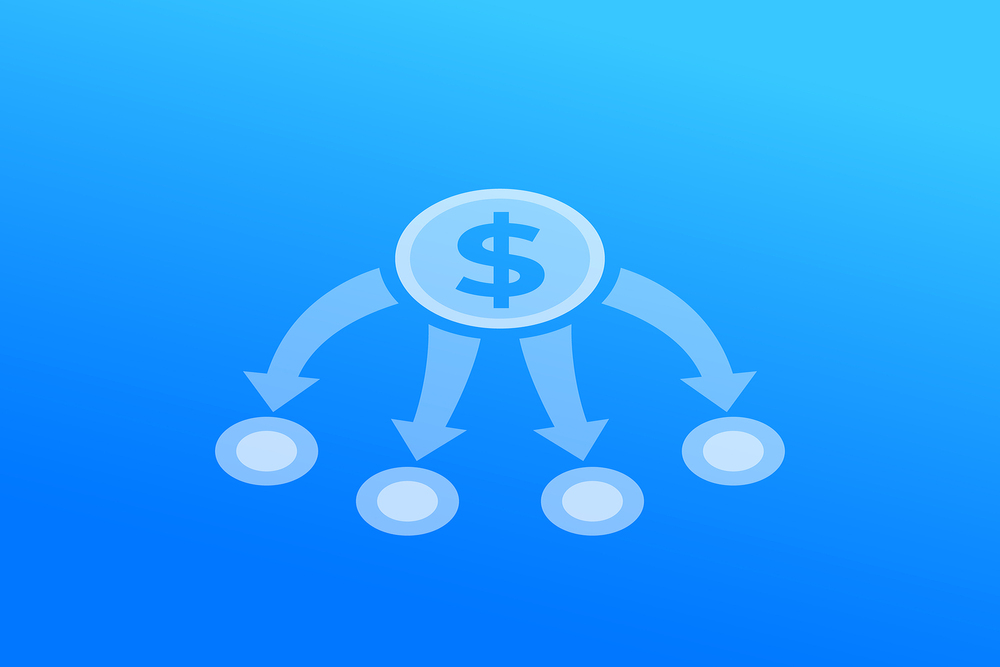The article “What A Stock Split Means For Your Portfolio And Tax Situation” was originally published on MoneySense on September 8, 2020.
After recent stock splits for big names like Apple and Tesla, investors may be wondering: What are the tax and investment implications of a stock split?
When a stock splits, investors end up with more shares of a company, at a lower stock price. An example might be a 2:1 split, where an investor with 10 shares worth $100 each ends up with 20 shares worth $50 each after the stock split.
Apple (Nasdaq: AAPL) and Tesla (TSLA) both had stock splits on August 31. Apple split 4:1 and Tesla split 5:1, lowering their stock prices and multiplying the number of shares issued by 4 and 5 respectively.
Splits can also go the other way. The same day as AAPL and TSLA split their stocks, two other companies—Heatherdale Resources and Bam Bam Resources—did reverse splits. With a reverse stock split, instead of getting more shares at a lower price, an investor ends up with fewer shares at a higher price.
Stock splits tend to be when a stock price gets high, while reverse splits are generally done when a stock price gets low. In the case of Apple and Tesla, their stock prices were up 76% and 596% respectively this year through August 31. Heatherdale and Bam Bam, on the other hand, were both down considerably.
It is important for investors to understand that the reason for a stock split is generally quite practical. It may be easier to facilitate trading in a stock and increase liquidity if investors can trade in lots of 100 or 1,000 shares. The Toronto Stock Exchange, New York Stock Exchange and Nasdaq all have board lots of 100 shares for trading in stocks valued at over $1. Odd lots that are not multiples of 100 may be harder to fill and may be subject to higher commissions. However, commissions have decreased dramatically in recent years, particularly at discount brokerages, so another important reason for stock splits may be psychology.
Investors may prefer a stock that seems more reasonably priced and is not too high in value, so a company may do a stock split so its shares appear more affordable. To be clear, a stock split does not change the value of a company or its shares. If you cut a pumpkin pie into 6 slices or 12 slices, the size of the pie does not change.
That said, with more retail investors buying stocks at low or no commission, there may be investors who cannot or will not buy 1 share of Tesla for $2,500, but at $500 after a 5:1 split, they can become a shareholder.
From a tax perspective, investors only need to worry about stock splits in taxable non-registered accounts. This is because in a tax-free savings account (TFSA) or tax-deferred RRSP, there are generally no tax implications from buying or selling investments.
In a non-registered account, there are no immediate tax implications of a stock split or reverse split. In other words, it is not as if the stock is sold or deemed to be sold.
However, investors do need to ensure they properly track their adjusted cost base per share after a split. As an example, if an investor bought 10 shares worth $100, their total cost base would be $1,000. If the stock split 2:1, they would have 20 shares with the same $1,000 total cost base, but the cost per share went from $100 each to $50 each, calculated as $1,000 divided by 20 shares. When those shares are sold, they may result in a capital gain or loss. depending on whether the sale price is higher or lower than the adjusted cost base.
Portfolio rebalancing may be required
Another example: Warren Buffett’s Berkshire Hathaway has an interesting stock split history (or lack thereof). Berkshire has two classes of shares: Class A and Class B. The Class A shares have never split, seemingly as a testament to Buffett’s long-term buy and hold approach to investing. The shares were valued at an astonishing $327,280 at the close of trading on August 31. Berkshire’s Class B shares were introduced in 1996 at a value of 1/30th of the Class A shares, and subsequently split 50:1 in 2010. The intention in both cases was to make the company more affordable to retail investors. The class B shares closed at $218 on August 31—1/1,500th of the class A value.
The markets initially applauded Apple and Tesla’s stock splits by bidding the share prices up even further. But, again, a stock split does not make the company more valuable. And because a stock split often follows a big increase in a stock’s price, an investor should consider the impact of that stock price run up.
As mentioned, Apple was up 76% (79% including dividends) and Tesla was up 596% year to date as of August 31. The S&P 500 was up about 10% over the same period and the TSX was down 1%. That means an investor who started the year with a 5% allocation to Apple or Tesla in a 50/50 U.S./Canadian stock portfolio where the other 95 per cent of the portfolio tracked the indices might have had 8% in Apple or 23% in Tesla as of August 31. So, though a stock split is not necessarily a buy or sell signal for a stock, the stock price increase or stock price decrease could be a reason to consider selling or buying for the purposes of rebalancing a diversified portfolio.
Jason Heath is a fee-only, advice-only Certified Financial Planner (CFP) at Objective Financial Partners Inc. in Toronto. He does not sell any financial products whatsoever.

